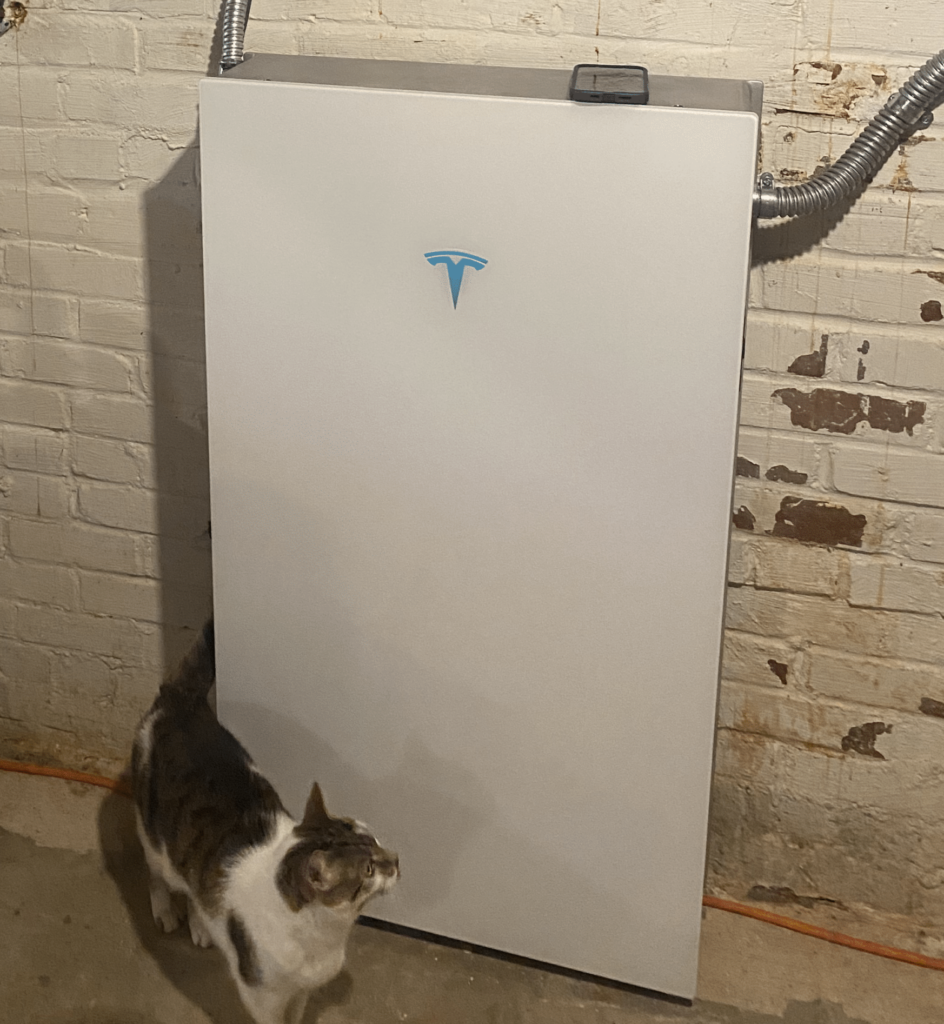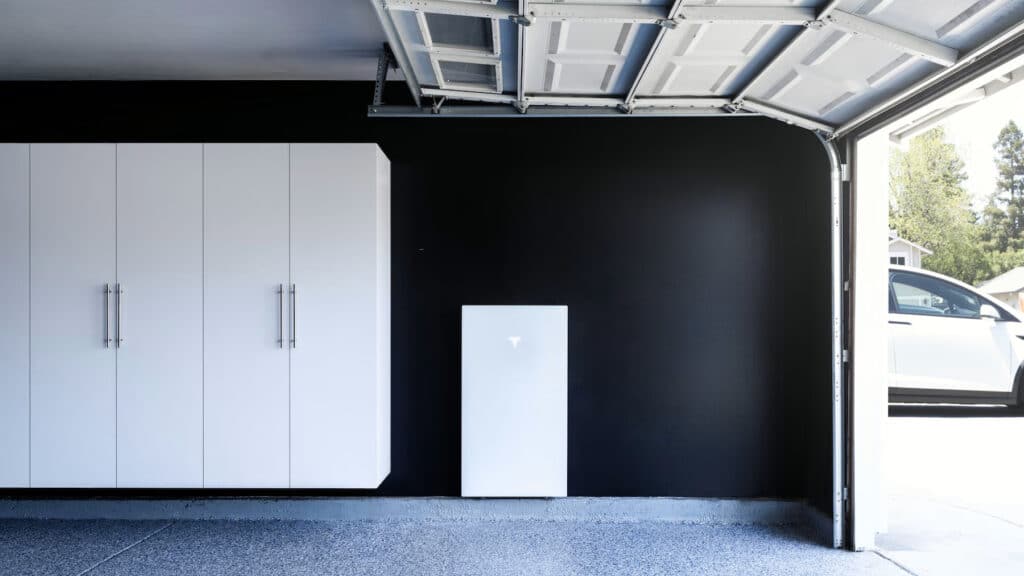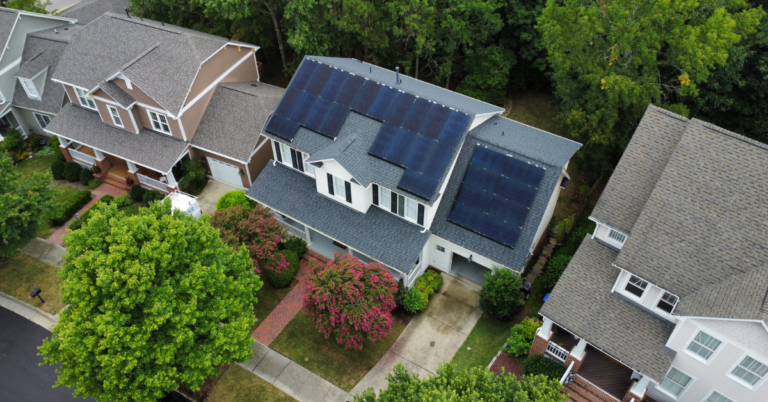Tesla introduces the Powerwall 3 in 2024
As a Premier Certified Tesla Powerwall Installer, we’ve installed over 1,000 Powerwalls in North Carolina! Being among the first to pilot the Powerwall 3 in our state, we’ve gained valuable insights into this new product, and we’re excited to offer it as a battery storage solution to our customers.

When it comes to deciding on a battery storage solution, it’s important to consider more than just the latest technology. You want to find the right match for your energy goals and lifestyle. So let’s dive into the Tesla Powerwall 3, its features, capabilities, and see how it compares to past versions of the Powerwall.
Key features of the Tesla Powerwall 3
Boosted Continuous Power
The Powerwall 3 clocks in at 11.5kW continuous power supply, while previously the Powerwall 2 maxed out at 5kW. That’s a 130% increase! This means it can run appliances like lights, TVs, and refrigerators continuously without exceeding the battery’s power limit. With mindful consumption, the Powerwall 3 can extend usage time of your appliances during an outage.
Wisdom nugget: You’ll still want to be mindful and shift heavier consumption to periods when sunlight is available to avoid quickly depleting your battery.
Higher Load Start Capability
The Powerwall 3 has a load start capability of 185 LRA, 75% higher than the Powerwall 2. This means the battery can handle larger bursts of power when things like the fridge or AC turn on. This is important because it helps make sure your appliances can start and run smoothly without causing problems or making the Powerwall shut down.
Increased Max Solar System Size
The Powerwall 3 clocks in at 20 kW DC, 119% higher compared to the Powerwall 2. This is a key detail as it tells you how much solar energy your Powerwall can effectively handle and store, ensuring that your home can use as much solar power as possible, even when the sun isn’t shining.
More MPPTs
The Powerwall 3 features a built-in inverter, showcasing the functionality of 6 Maximum Power Point Trackers (MPPT). Comparatively, the Powerwall Plus had 4 MPPTs, while the Powerwall 2 missed out on this feature as it relied on an external inverter.
With MPPTs, the Powerwall 3 can continuously adjust and optimize the performance of your solar panels to ensure they are always operating at their maximum power point. This maximizes the energy harvested from the sun and ensures efficient charging of the Powerwall.
AC Coupled
AC-coupling capabilities for the Powerwall mean that if you already have solar, we’ll be able to pair your existing inverter setup by including a Tesla Gateway.
EV Charger Integration
This is a really cool feature. The Powerwall 3 has the ability to integrate an EV charger which can help minimize the need for additional breaker slots and can alleviate the need for a costly service upgrade. This upgrade comes with several other factors –

Breaking Down the Powerwall 3 Specs
Here’s a table comparing the three Powerwall models:
| Powerwall Models | Powerwall 2 | Powerwall + | Powerwall 3 |
|---|---|---|---|
| Energy Capacity | 13.5 kWh | 13.5 kWh | 13.5 kWh |
| Scalability | Up to 10 units | Up to 4 units | Up to 4 units |
| Stacking | Up to 3 | Up to 2* | Currently 1** |
| Continuous Output | 5kW | 5.8 kW (no sun) 7.6 kW (full sun) | 11.5 kW |
| Load Start Capacity | 106 LRA | 118 LRA | 185 LRA |
| Weight | 251 lbs. | 344 lbs. | 287 lbs. |
| Round-Trip Efficiency | 90% | 90% | 90% |
| Built-in Inverter | No | Yes | Yes |
| MPPTs | N/A | 4 | 6 |
| Warranty | 10 years | 10 years | 10 years |
*A Powerwall Plus can be stacked with a Powerwall 2
**Updates are coming at the end of the year – these updates will look like DC expansion kits, allowing for simple scalability
Spec definitions for our high fact finders
What does energy capacity mean?
The energy capacity of a Tesla Powerwall is all about the total amount of electrical energy it can store, measured in kilowatt-hours (kWh). This shows how much electricity the Powerwall can hold when fully charged and how much it can send to your home or back to the grid before needing a recharge.
For example, the Tesla Powerwall 2 has an energy capacity of 13.5 kWh. This means it can store 13.5kW of electricity – it’s like having a powerhouse that fuels your home appliances, lighting, and all your electrical essentials. The energy capacity decides how long this battery can keep things running before needing to be recharged by the sun.
Scalability vs. Stackable for Powerwall
While scalability addresses the electrical and system capacity expansion, stackability deals more with the physical layout and installation aspects of the battery systems. Both features are important depending on your energy needs and available space.
Scalability refers to the ability to increase the energy storage capacity by adding more battery units to the system. This is crucial for homes or businesses that have high energy demands or want to expand their energy storage as their needs grow or as they add more renewable energy generation capabilities.
Stackability refers to the physical ability of units to be stacked on top of one another, which helps in saving space and makes installation more flexible and aesthetically pleasing.
Continuous Output vs. Load Start Capability for Powerwall
Continuous Power Output refers to the maximum amount of power that the battery can deliver on a sustained basis over an extended period.
Load Start Capability is all about managing those quick bursts of power when your appliances first kick into action.
What is round-trip efficiency?
Round-trip efficiency deals with how much energy you can actually use after storing it in the battery. With the Powerwall 2, out of every 100 kWh stored, you get around 90 kWh for use after those pesky energy losses during charging and discharging. 90% is an impressive efficiency – its one reason why the Powerwall is such a hit for home energy storage systems.
What does a built-in inverter in the Tesla Powerwall mean?
An inverter is a vital component in solar and battery storage systems. It converts the direct current (DC) electricity stored in the battery into alternating current (AC) electricity, which is the standard form used in homes and by the electric grid.
Overall, a built-in inverter means less components to deal with, which makes the Tesla Powerwall a more user-friendly, efficient, and aesthetically pleasing solution.
What is a Maximum Power Point Tracker (MPPT)?
An MPPT is a technology used in solar inverters to maximize the power output from a solar panel array. Solar panels have a point at which they produce their maximum power (a.k.a. the Maximum Power Point), and this point can change with varying sunlight conditions, temperature, and other factors. The MPPT constantly adjusts the electrical load to ensure the solar panels are operating at their optimal power output.
What can you back up with a Powerwall 3?
A single Powerwall 3 can power most of your appliances, big and small. That includes your lights, Wi-Fi, refrigerators, AC units, heat pumps, wells, pool equipment, EV chargers, water heaters and other home appliances like your laundry and dishwasher.
What could you backup with a single Powerwall 2?
A single Powerwall 2 can power your emergency circuits, lights, and outlets. When stacked with more than one unit (you can stack up to 6), your Powerwalls can back up your entire home, which we refer to as ‘whole-home backup’. Learn more about how the Powerwall 2 can backup your home in this video.
How many Powerwall 3’s do you need?
We recommend starting with one Powerwall 3 since a single unit will cover 95% of the grid outages we see in North Carolina (lasting a few hours). From there, you can see how that backup feels and we can always go for another if you find it doesn’t cover all of your home’s energy needs.
How much does a Powerwall 3 cost?
The million dollar question, how much does a Tesla Powerwall 3 cost? Our pricing for the Powerwall 3 will be in the same ballpark range as the Powerwall 2 and Powerwall Plus. For reference, a single Powerwall 2 costs approximately $15,400 – $15,900 before you get 30% off the installed price, thanks to the 30% Federal Solar Tax Credit! If you are purchasing multiple units or bundle it with a solar purchase, each additional Powerwall would cost around $11,900 to $11,600.
Is the Powerwall 2 going anywhere?
Tesla will phase out the Powerwall 2 sometime in the near future. If you’ve already purchased a Powerwall 2 or Powerwall+, Tesla will continue to support these products with firmware updates through the app.
What’s Next?
If you’re interested in starting your solar + battery journey or adding a battery to an existing system, reach out today! We’ll walk you through a solution tailored to your specific needs.














